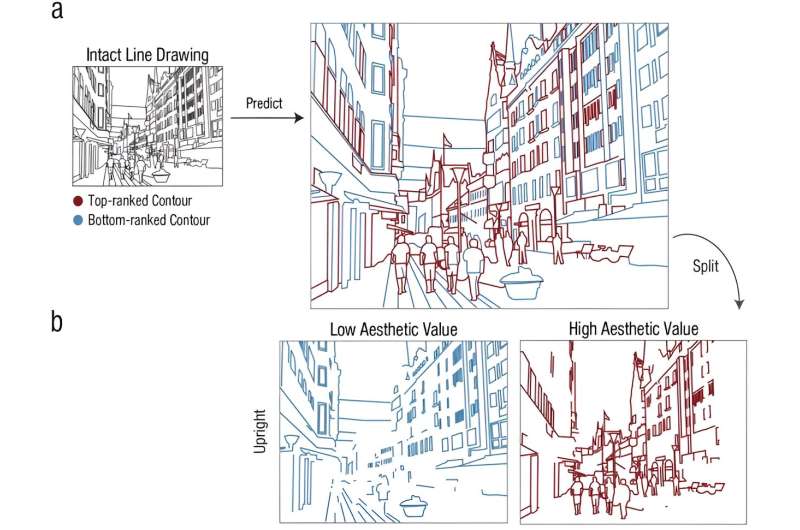This article has been reviewed according to Science X's editorial process and policies. Editors have highlighted the following attributes while ensuring the content's credibility:
fact-checked
peer-reviewed publication
trusted source
proofread
Researchers reveal the small changes that can make a picture more likable

We've all had the experience of looking at a picture—of a sunset, a person, a sleek vehicle or adorable animal—and finding it enormously pleasing. But why? Are we culturally conditioned to gain pleasure from certain images and not others, or is there something else going on in our brains?
Understanding the psychological mechanisms that underlie aesthetic perceptions is a key activity in the lab of Dirk Bernhardt-Walther, associate professor in the University of Toronto's department of psychology in the Faculty of Arts & Science.
A paper in Psychological Science co-authored by Bernhardt-Walther and Ph.D. student Delaram Farzanfar shows that by modifying mere lines and contours in a scene, one can increase its likeability.
In the study, the researchers asked 75 participants to rate how much they liked line drawings of complex scenes. The researchers then derived a statistical model of the importance of contour properties—such as orientations, curvature, junctions and symmetry—to measure the aesthetic appeal of the drawings.
By selectively removing contours based on their predicted appeal, Farzanfar and Bernhardt-Walther generated two versions of each drawing. One was predicted to be liked more than the other. When a new set of 77 participants were shown these manipulated drawings, they indeed preferred one version more than the other, as predicted by the statistical model—even though the two drawings depicted the same scene.
"These are the properties that we measured and manipulated," says Bernhardt-Walther. "We show that by selecting certain contours in an image based on these properties, we can make people like an image more or less."
Other studies have been conducted on aesthetic valuation of images. But Bernhardt-Walther says these studies examined images as a whole—not the shapes or spatial relationships contained within them.
"We think that's important," he says. "We developed these algorithms to measure contour properties, and we can use these algorithms in other studies. Our lab made a major effort during the pandemic to develop these techniques to measure contour properties that could not be measured automatically before."
The set of algorithms, known collectively as the Mid-Level Vision Toolbox, was able to predict, and then confirm, that structural regularities in an image increase the likelihood that people will find it pleasing. In particular, the presence of "T junctions" in a scene—the effect created when a horizontal line is placed atop a vertical one—elevates a picture's likeability.
The researchers believe that regularity in the way lines and shapes appear in a picture may elicit a sense of psychological safety in the viewer; arrangements that are more familiar, and that make geometric sense to viewers, may thus appear to be more likable.
Marketers, designers, architects and others all stand to benefit from studies such as this, which help to increase our scientific understanding of aesthetic preference.
"The scientific study of aesthetics can help us develop evidence-based interventions for improved subjective well-being and social connectedness," says Farzanfar, who is also a registered psychotherapist.
Farzanfar is conducting follow-up studies on this line of work with Norman Farb, an associate professor of psychology at U of T Mississauga.
Though researchers in Bernhardt-Walther's lab concentrate on the neural and computational principles behind high-level sensory perception, they are making important contributions toward uncovering an emerging language of aesthetics. And with his training as a physicist, computer scientist and psychologist, Bernhardt-Walther is well-placed to ensure that the new discoveries being made are technically sound.
"I've been trained as an experimental physicist, so I want to measure things. If you tell me something is beautiful, I want to know—how do you measure that? We're always trying to measure new effects in tightly controlled experiments. It's an exciting time because there's so much to do in this field."
More information: Delaram Farzanfar et al, Changing What You Like: Modifying Contour Properties Shifts Aesthetic Valuations of Scenes, Psychological Science (2023). DOI: 10.1177/09567976231190546





















